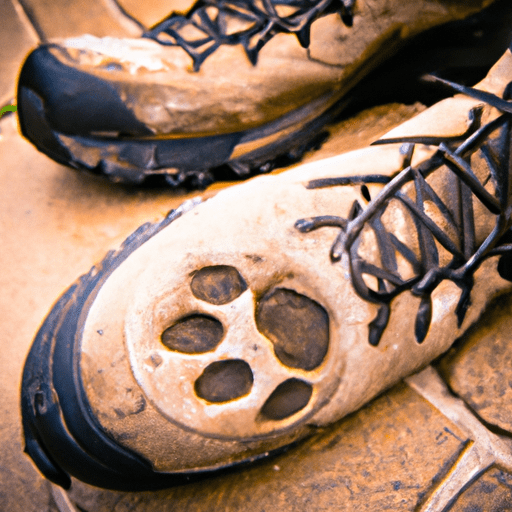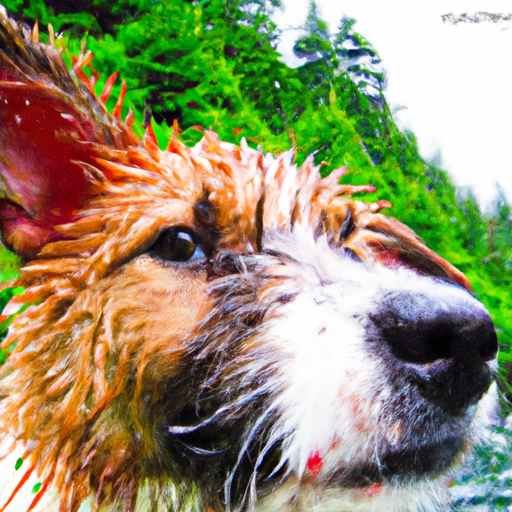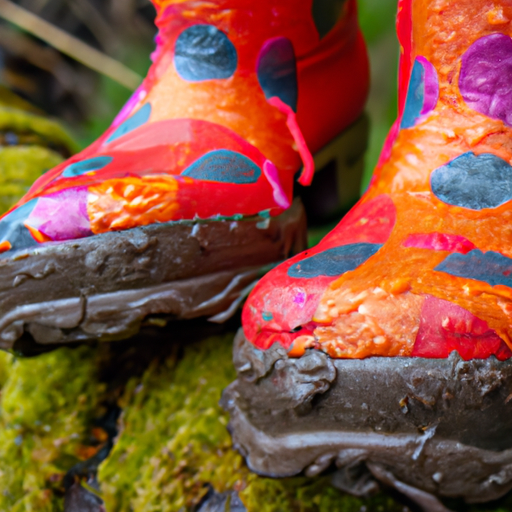Imagine the joy of exploring the great outdoors with your furry companion by your side. From the scenic trails to the fresh air, hiking with your dog is a wonderful bonding experience that both of you will cherish. However, it's important to be well-prepared for this adventure to ensure a safe and enjoyable experience for everyone involved. In this comprehensive guide, we will cover everything you need to know about hiking with your dog, from choosing the right trail to packing essential supplies. So grab your leash, lace up your hiking boots, and get ready for an unforgettable adventure with your four-legged friend.
Choosing the Right Trail
When it comes to taking your furry friend out on a hike, it's important to choose a trail that suits both of your needs. One of the first things to consider is the difficulty level of the trail. If you're a beginner hiker or your dog is not used to long walks, it's best to start with an easy trail. This way, you can gradually increase the difficulty level as your dog gets more comfortable and confident on the trails.
Another critical factor to consider is whether the trail is dog-friendly. Not all trails allow dogs, so it's essential to do your research beforehand. Check with local parks and trail authorities to find out which trails welcome four-legged companions. Additionally, some trails may have specific regulations for dogs, such as leash requirements or designated dog-friendly areas. Make sure you are aware of and respect these rules to ensure a positive and safe experience for everyone.
Preparation and Planning
Once you've selected the perfect trail, it's time to assess your dog's hiking ability. Dogs, like humans, need to build up their endurance gradually. Start with short walks around your neighborhood and gradually increase the distance and difficulty level. Observe how your dog handles different terrains and inclines to get a sense of their hiking capabilities.
Before hitting the trails, it's crucial to take your dog for a health check-up. Schedule a visit with your veterinarian to ensure that your furry friend is in good shape and up-to-date on vaccinations. Your vet can also recommend any preventive measures, such as tick and flea preventives, to protect your dog during your outdoor adventures.
Packing the essentials is also a vital part of your preparation. Make sure to bring enough food and water for your dog, as well as collapsible bowls for convenient feeding. It's also a good idea to carry some treats and toys to keep your dog engaged and reward them for their good behavior on the hike. Don't forget to pack poop bags for cleaning up after your dog and any medications they may need.
Training and Conditioning
Having a well-trained dog can make a world of difference during a hike. Before venturing out on the trails, spend some time teaching your dog basic commands like “sit,” “stay,” and “leave it.” These commands will come in handy when you encounter wildlife or if you need your dog to stay put in a potentially dangerous situation. Practice these commands regularly to reinforce them and ensure that your dog follows them even in exciting and distracting outdoor environments.
Leash training is another crucial aspect of preparing your dog for a hike. Most trails require dogs to be on-leash, so it's important for your dog to be comfortable and well-behaved on a leash. Start by introducing your dog to a leash and gradually increase the length of your walks. This will help your dog learn how to walk nicely without pulling while on a leash. If your dog tends to pull, consider using a harness instead of a collar to avoid any potential strain on their neck.
Building up your dog's endurance is also an essential part of training and conditioning. Just like humans, dogs need to gradually increase their stamina to handle longer hikes. Start with shorter hikes and gradually extend the distance as your dog gets more comfortable. Be observant of your dog's energy levels and monitor for any signs of exhaustion or discomfort. Remember, it's always better to start small and build up gradually to prevent any injuries or fatigue.
Safety Measures
Ensuring your dog's safety is a top priority when hiking together. Using a sturdy and reliable leash and harness is crucial to keeping your dog secure and under control. Opt for a leash that is appropriate for your dog's size and strength, and always keep a firm grip on the leash while hiking. A harness can provide additional support and prevent any strain on your dog's neck if they tend to pull or get excited during the hike.
Another important safety measure is to keep identification tags on your dog at all times. In case your dog accidentally gets separated from you on the trail, identification tags can help them be reunited with you quickly. Make sure the tags have your current contact information, including your name and phone number. Additionally, consider microchipping your dog, as this can be a lifesaver if the tags get lost or damaged.
Understanding potential hazards on the trail is also crucial for ensuring your dog's safety. Familiarize yourself with common dangers, such as poisonous plants, wild animals, or steep cliffs. Keep a close eye on your dog and constantly assess the environment for any potential risks. By being vigilant, you can prevent accidents and keep your dog safe throughout the hike.
Nutrition and Hydration
Proper nutrition and hydration are essential for your dog's well-being during a hike. Before hitting the trails, adjust your dog's feeding schedule to ensure they have enough time to digest their food. It's best to feed your dog a few hours before the hike to prevent digestive issues. Avoid feeding them immediately before or during the hike to minimize the risk of bloating or discomfort.
Carrying enough food and water for your dog is vital to keep them fueled and hydrated throughout the hike. Just like humans, dogs need to replenish their energy and stay hydrated, especially during physical activities. Invest in a lightweight collapsible water bowl and carry plenty of fresh water for your dog. Offer them water frequently, particularly during breaks or when they show signs of thirst.
Recognizing signs of dehydration is also important to prevent any health issues. Keep an eye out for symptoms such as excessive panting, dry nose and gums, decreased energy levels, or dark-colored urine. If you notice any of these signs, find a shaded area and allow your dog to rest while offering them water. If the symptoms persist or worsen, seek veterinary assistance immediately.
Gearing Up
Choosing the right gear for your dog is essential for their comfort and safety during the hike. Start by selecting a properly fitting harness or collar that will keep your dog secure and comfortable throughout the hike. Make sure the gear is made from durable materials and has reflective elements for increased visibility, especially if you plan to hike during low-light conditions.
Proper footwear can also make a difference, especially on rough or rocky terrains. Consider investing in dog boots or paw protectors to shield your dog's paws from hot surfaces, sharp rocks, or thorny plants. These boots not only provide protection but also help improve your dog's traction, making it easier for them to navigate challenging terrains.
In extreme weather conditions, such as cold winters or scorching summers, protective clothing for your dog can be beneficial. Look for jackets or coats that provide insulation and warmth during colder hikes. Similarly, consider lightweight and breathable clothing to protect your dog from the heat and UV rays during summer hikes. Always prioritize your dog's comfort and well-being when selecting their hiking gear.
Trail Etiquette
Practicing good trail etiquette is not only polite, but it also ensures a positive hiking experience for everyone involved. One of the most important rules is to keep your dog leashed unless you are in a designated off-leash area. Even if your dog is well-behaved, it's important to respect the rules and regulations of the trail. Leashing your dog prevents any potential accidents, disturbances to other hikers, or harm to the local wildlife.
Cleaning up after your dog is another essential aspect of good trail etiquette. Always carry poop bags and pick up after your dog, even in the wilderness. Proper waste disposal helps maintain the cleanliness of the trail, prevents the spread of diseases, and shows respect for fellow hikers and the environment. Make sure to dispose of the waste in designated trash cans or carry it with you until you can properly dispose of it.
Respecting nature and wildlife is also crucial while hiking with your dog. Keep your dog away from sensitive areas, such as habitats, nesting sites, or fragile vegetation. Avoid allowing your dog to disturb or chase wildlife, and always keep them under control to prevent any negative interactions. By being considerate and responsible, you can help preserve the natural beauty of the trails and ensure a harmonious coexistence with nature.
Emergency Preparedness
No matter how well-prepared you are, emergencies can happen. It's important to be equipped with a doggy first-aid kit specifically tailored to your dog's needs. The kit should include essentials such as bandages, antiseptic wipes, tweezers for removing ticks, and any necessary medications your dog takes. Familiarize yourself with basic first-aid techniques for dogs, and know how to address common injuries such as cuts, sprains, or insect bites.
In case of a medical emergency, it's crucial to know the location of emergency veterinary clinics along your hiking route. Research local clinics or emergency services in the area beforehand, and save their contact information in your phone or carry it on a physical note in case of limited cell service. Having this information readily available can save precious time and ensure your dog receives prompt medical attention if needed.
Understanding common hiking injuries is also important for your preparedness. Being able to recognize and address issues such as overheating, paw pad injuries, or exposure to hazardous plants can prevent complications and keep your dog safe. Research common hiking injuries and study their symptoms and treatment options to be well-prepared for any situation that may arise.
Trail Tips and Tricks
When it comes to hiking with your dog, a few tips and tricks can make the experience smoother for both of you. Using paw protection, such as dog boots or paw wax, can help protect your dog's paws from hot surfaces, rough terrains, or harsh weather conditions. These protective measures can ensure your dog's paws stay comfortable and injury-free throughout the hike.
Avoiding hot surfaces is also important, especially during hot summer months. Keep in mind that asphalt, sand, rock, or metal surfaces can become scorching hot and potentially burn your dog's paws. Opt for trails with shaded paths or walk your dog during cooler times of the day to minimize the risk of paw pad burns. If the ground is too hot for your hand, it's too hot for your dog's paws.
Managing encounters with other hikers is another essential skill. While some people may love dogs and be excited to meet your furry friend on the trail, others may be uncomfortable or afraid. Always ask for permission before allowing anyone to pet your dog, and be respectful of their wishes. Keep your dog under control at all times to prevent them from jumping on or inadvertently intimidating other hikers.
After the Hike
Once you've completed your hike, it's time to attend to your dog's post-hike needs. Immediately check your dog for any injuries or signs of discomfort, paying particular attention to their paws, joints, and coat. Remove any ticks you may find and thoroughly inspect for any cuts or scrapes. If you notice any injuries or persistent limping, consult with your veterinarian as soon as possible.
Post-hike grooming is also essential for your dog's cleanliness and comfort. Brush your dog to remove any dirt, debris, or loose hair from their coat. This not only helps keep their coat healthy but also prevents matting or tangling. Additionally, check their ears for any signs of irritation or infection and clean them if necessary. Grooming your dog after a hike keeps them looking and feeling their best.
Rewarding your dog for a great hike is an important way to show them appreciation and reinforce positive behavior. Treat your dog to their favorite snack or toy and spend some quality time together after the hike. Positive reinforcement helps create a positive association with the hiking experience and motivates your dog to continue enjoying outdoor adventures with you.
In conclusion, hiking with your dog can be a wonderful and rewarding experience for both of you. By choosing the right trail, preparing and planning ahead, training and conditioning your dog, adhering to safety measures, ensuring proper nutrition and hydration, and being equipped with the right gear and knowledge, you can enjoy a memorable and safe hiking experience with your furry companion. Remember to always prioritize your dog's well-being, respect the environment, and follow trail etiquette to make the most out of your adventures together. Happy hiking!






